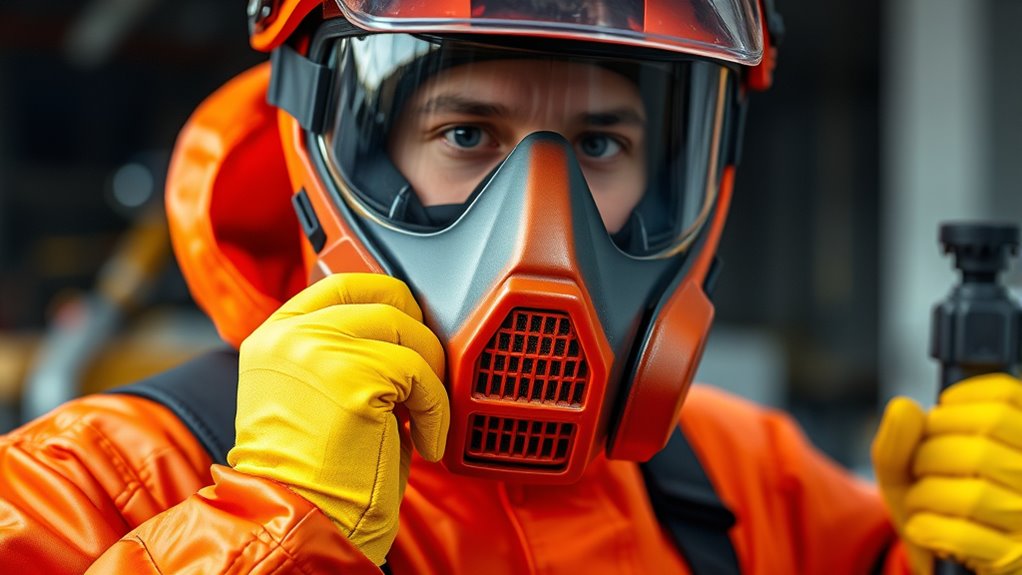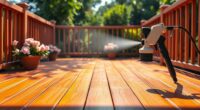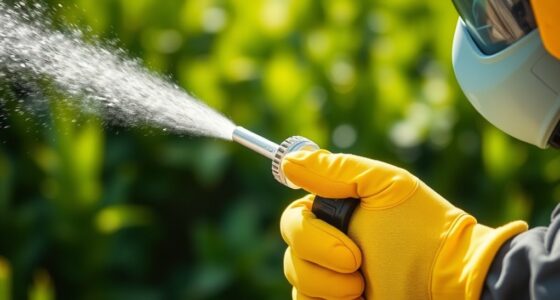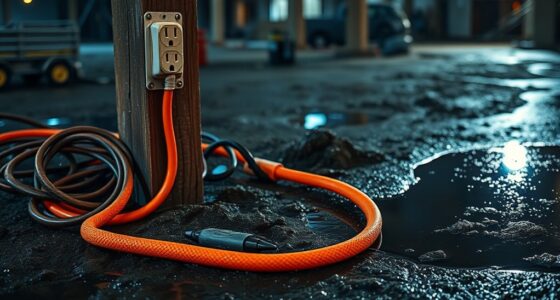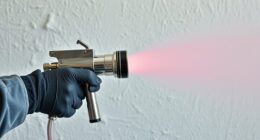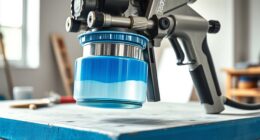When doing airless spraying, you need proper PPE to stay safe. Wear impact-resistant goggles or a full-face shield to protect your eyes and face. Use chemical-resistant clothing, gloves, and boots to guard against splashes and overspray. A well-fitting respirator with filters helps prevent fumes and fumes inhalation. Regularly inspect and maintain your gear to guarantee it stays effective. To learn more about selecting and maintaining your PPE, keep exploring the options available to you.
Key Takeaways
- Wear impact-resistant goggles or full-face shields to protect against overspray, projectiles, and chemical splashes.
- Use chemically resistant gloves, long sleeves, and aprons to prevent skin exposure to paints and solvents.
- Equip yourself with respiratory PPE such as masks or PAPRs to filter fumes, vapors, and airborne particles.
- Choose sturdy, slip-resistant footwear with toe protection to prevent injuries from falling objects or slips.
- Regularly inspect, clean, and properly store PPE to ensure ongoing safety and effective protection during spraying.
Essential Eye and Face Protection
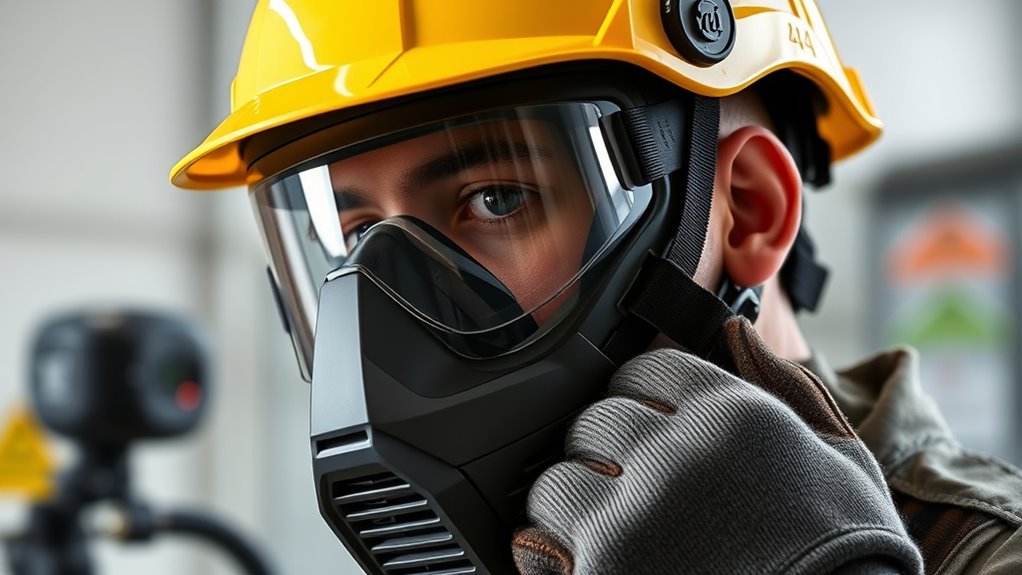
To effectively protect your eyes and face during airless spraying, wearing the right PPE is essential. Start by conducting hazard identification to understand potential risks like overspray, mist, and projectiles. Once you recognize these hazards, ensure your eye and face protection is compatible with your spray equipment and other gear. Select goggles or a full-face shield designed to withstand impacts and prevent chemical exposure. Compatibility means the PPE fits well with your other protective gear, avoiding gaps that could expose you to hazards. Proper eye and face PPE not only shields you from immediate injuries but also reduces long-term health risks caused by chemical fumes and debris. Additionally, understanding regional regulations and safety standards can help ensure your PPE meets required safety standards for airless spraying to maximize protection.
Protective Clothing and Gloves
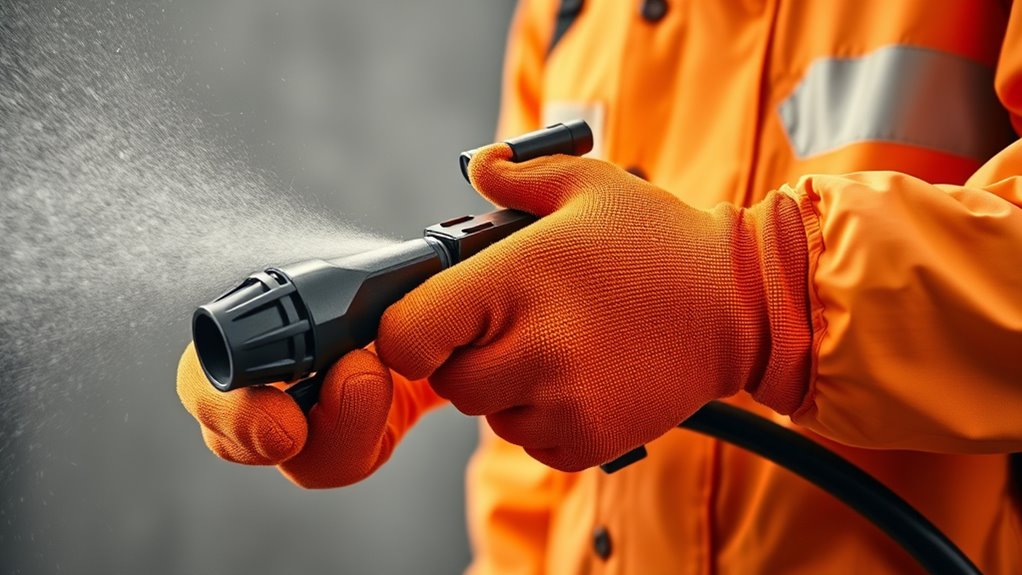
After making certain your eye and face protection are properly in place, focus on wearing suitable protective clothing and gloves to safeguard your skin from overspray, chemical splashes, and debris. Choose clothing made from materials with high chemical resistance to prevent harmful exposure. Long sleeves, pants, and aprons provide an extra barrier against splashes and spills. When selecting gloves, prioritize those offering chemical resistance and thermal protection, especially if working with heated materials or solvents. Ensure gloves fit well and are durable enough to withstand the job’s demands. Proper protective clothing and gloves reduce the risk of skin irritation, burns, and chemical absorption, keeping you safe throughout the spraying process. Always inspect your gear for damage before starting work. Using self watering plant pots as an example, it’s important to understand how materials and design can affect overall safety and plant health.
Respiratory Equipment for Airless Spraying
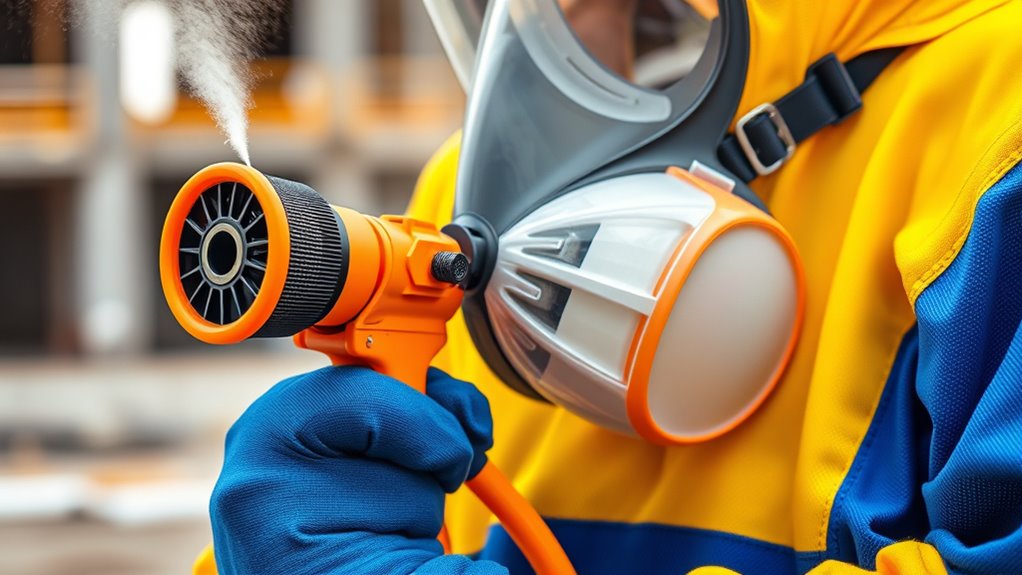
Since airless spraying produces fine mist and potentially harmful airborne particles, wearing proper respiratory equipment is essential for protection. You need gear that offers reliable airborne particle filtration to guard against inhaling hazardous substances. With increased respiratory hazard awareness, select equipment designed to filter out paint fumes, solvents, and VOCs effectively. Visualize yourself wearing:
- A tight-fitting respirator mask with replaceable filters
- Half-mask respirators with multi-stage filters
- Powered air-purifying respirators (PAPRs) for extended protection
- Respirator hoods connected to filtration systems
These options help prevent inhalation of dangerous airborne particles, reducing health risks. Remember, proper respiratory equipment not only shields your lungs but also ensures compliance with safety standards during airless spraying. Additionally, AI safety measures are crucial in developing robust protective gear to adapt to evolving hazards.
Footwear and Other Safety Gear
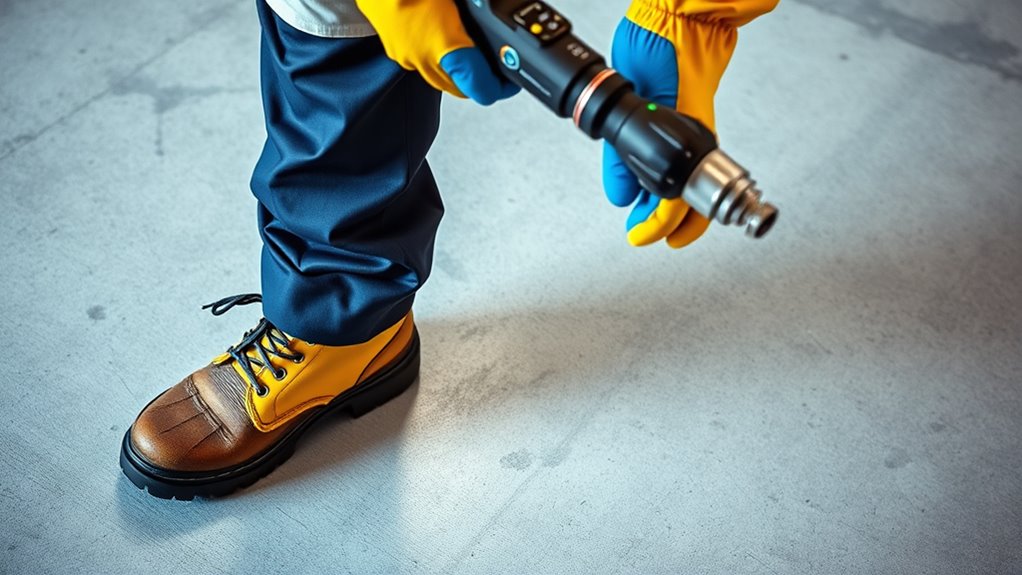
Proper respiratory protection is essential when working with airless spraying, but safeguarding your entire body requires attention to footwear and other safety gear. Wear sturdy shoes with steel toes to protect your feet from falling objects or accidental impacts. Slip resistant soles are vital to prevent slips and falls on wet or uneven surfaces, especially in spray environments. Choose footwear that offers good ankle support and is made from chemical-resistant materials to guard against splashes. Additionally, consider safety goggles and gloves to shield your eyes and hands from paint overspray and chemicals. Proper footwear and safety gear not only enhance protection but also improve your stability and confidence during spraying tasks. Always select PPE that meets safety standards for maximum protection.
Proper PPE Maintenance and Usage Tips
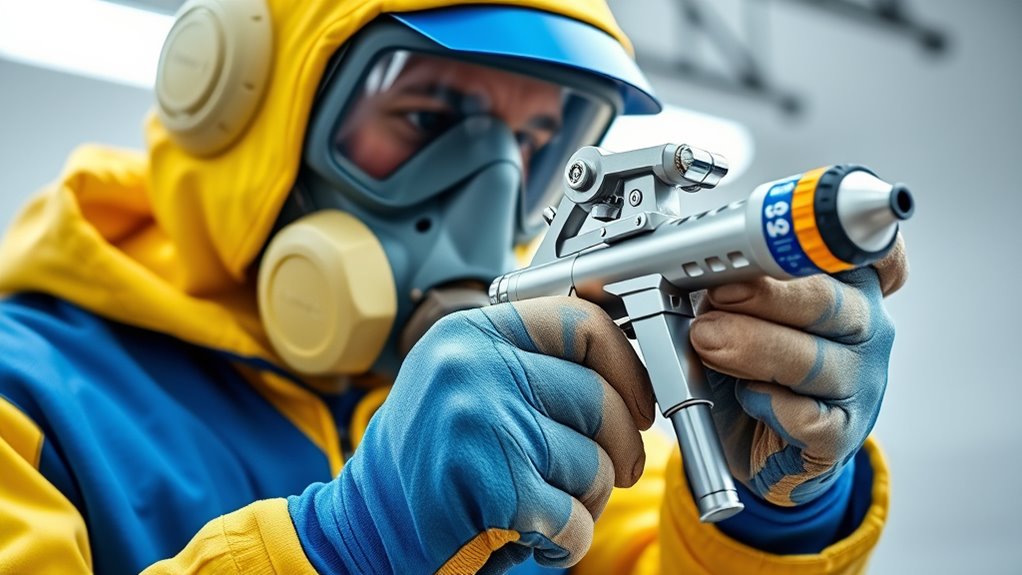
To guarantee your PPE provides effective protection, you must maintain and use it correctly. Proper PPE maintenance starts with regular PPE inspection—check for tears, cracks, or worn areas that could compromise safety. When not in use, store your PPE in a clean, dry, and designated PPE storage area to prevent damage and contamination. Always clean your PPE after each use, removing any paint, solvents, or debris. Pay attention to the straps and fasteners, ensuring they function properly. Keep your PPE organized so it’s ready when needed, and replace any damaged or expired items immediately. Remember, well-maintained PPE not only lasts longer but also ensures your safety during airless spraying. Regular inspection and proper storage are key to effective protection. Additionally, understanding the importance of air quality and proper maintenance routines helps ensure your PPE remains effective over time.
Frequently Asked Questions
How Do I Choose the Right PPE Size for Airless Spraying?
When choosing the right PPE size for airless spraying, focus on PPE fit and comfort. You should measure your head, face, and body accurately to find gear that snugly fits without being tight. Proper PPE fit guarantees safety, while PPE comfort keeps you protected without discomfort. Always try PPE on before use, and select sizes that allow free movement and ventilation, so you stay safe and comfortable during your spraying tasks.
Can PPE Be Reused After Exposure to Hazardous Materials?
Think of PPE like your armor—after exposure to hazardous materials, it’s vital to assess if it can be reused. You should follow PPE decontamination procedures carefully to remove contaminants. If the gear can’t be effectively cleaned or shows damage, disposal procedures are necessary to prevent cross-contamination and protect your health. Always prioritize safety by inspecting PPE thoroughly before reuse or discarding it when contaminated beyond cleaning.
What Are the Signs of PPE Deterioration During Use?
You should regularly check for visible wear signs, like tears, cracks, or frayed areas, which indicate PPE material degradation. These signs compromise your protection and should never be overlooked. If you notice any deterioration, replace the affected gear immediately to ensure safety during airless spraying. Consistent inspection helps maintain the integrity of your PPE, preventing potential exposure to hazardous materials and keeping you safe on the job.
How Often Should PPE Be Replaced for Safety?
You should replace PPE regularly to guarantee safety. Follow your PPE maintenance schedule and safety protocols, checking for signs of wear or damage before each use. Replace gloves, masks, or suits immediately if they show tears, cracks, or deterioration. Frequent inspections help prevent accidents, so don’t delay replacing compromised gear. Staying diligent about PPE replacement keeps you protected and maintains a safe working environment during airless spraying.
Are There Specific PPE Recommendations for Different Spray Materials?
You might find it surprising, but choosing the right PPE depends on your spray material. Material-specific PPE is essential for protecting yourself from chemical exposure, spills, and sprays. Always consider spray material compatibility when selecting gloves, masks, and protective clothing. For instance, solvent-resistant gear for thinner paints and chemical-resistant suits for corrosive materials. Properly matching PPE to your spray material guarantees safety and efficiency on every job.
Conclusion
So, next time you skip or skimp on your PPE, remember—it’s only your eyes, lungs, and skin on the line. Ironically, ignoring safety gear might seem quicker and easier, but it can lead to costly injuries or health issues that slow you down for good. Protect yourself properly; after all, your future self will thank you for not risking everything just for a moment’s convenience. Safety isn’t optional—it’s your best investment.
